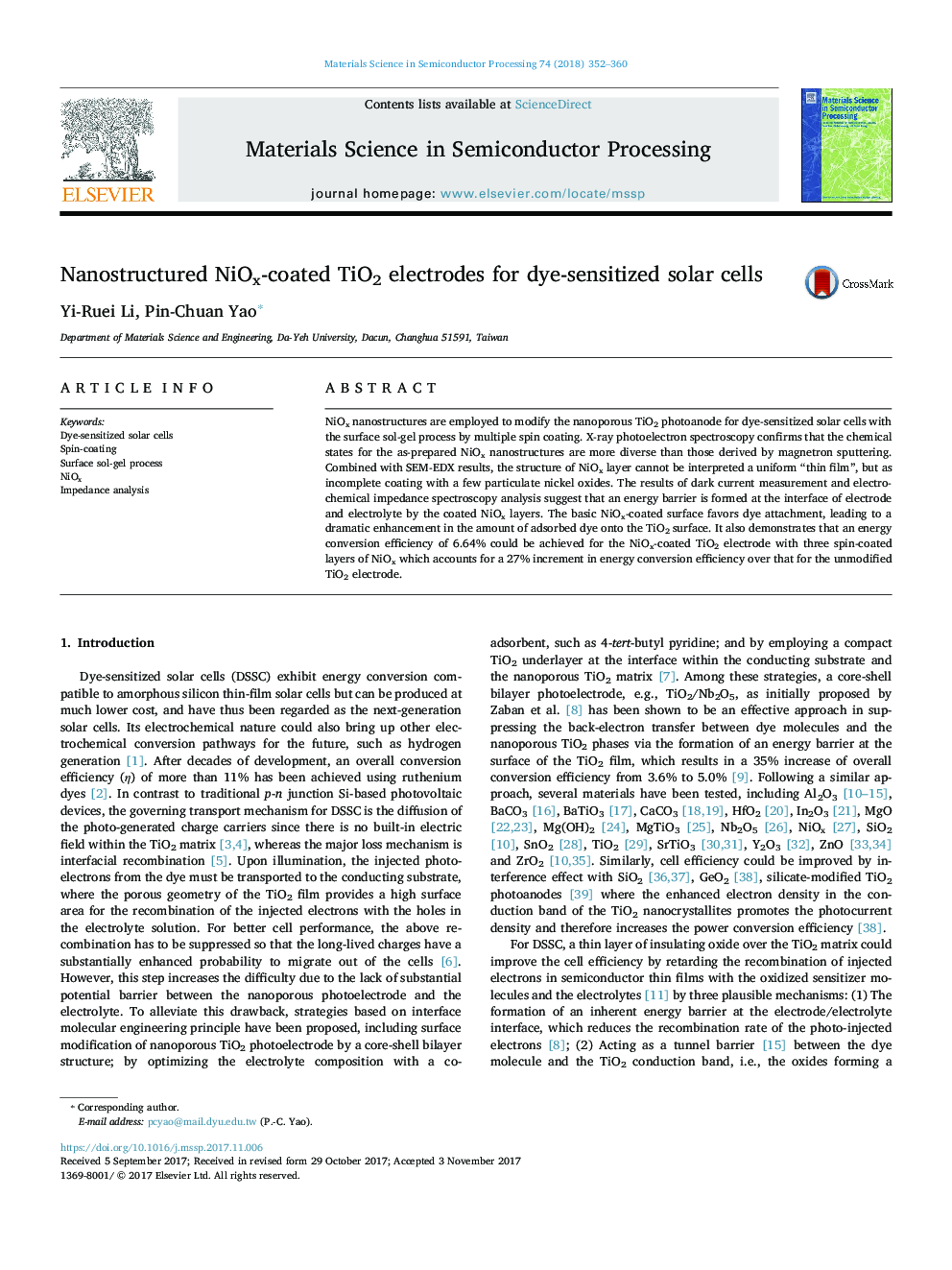| Article ID | Journal | Published Year | Pages | File Type |
|---|---|---|---|---|
| 7118253 | Materials Science in Semiconductor Processing | 2018 | 9 Pages |
Abstract
NiOx nanostructures are employed to modify the nanoporous TiO2 photoanode for dye-sensitized solar cells with the surface sol-gel process by multiple spin coating. X-ray photoelectron spectroscopy confirms that the chemical states for the as-prepared NiOx nanostructures are more diverse than those derived by magnetron sputtering. Combined with SEM-EDX results, the structure of NiOx layer cannot be interpreted a uniform “thin film”, but as incomplete coating with a few particulate nickel oxides. The results of dark current measurement and electrochemical impedance spectroscopy analysis suggest that an energy barrier is formed at the interface of electrode and electrolyte by the coated NiOx layers. The basic NiOx-coated surface favors dye attachment, leading to a dramatic enhancement in the amount of adsorbed dye onto the TiO2 surface. It also demonstrates that an energy conversion efficiency of 6.64% could be achieved for the NiOx-coated TiO2 electrode with three spin-coated layers of NiOx which accounts for a 27% increment in energy conversion efficiency over that for the unmodified TiO2 electrode.
Related Topics
Physical Sciences and Engineering
Engineering
Electrical and Electronic Engineering
Authors
Yi-Ruei Li, Pin-Chuan Yao,
